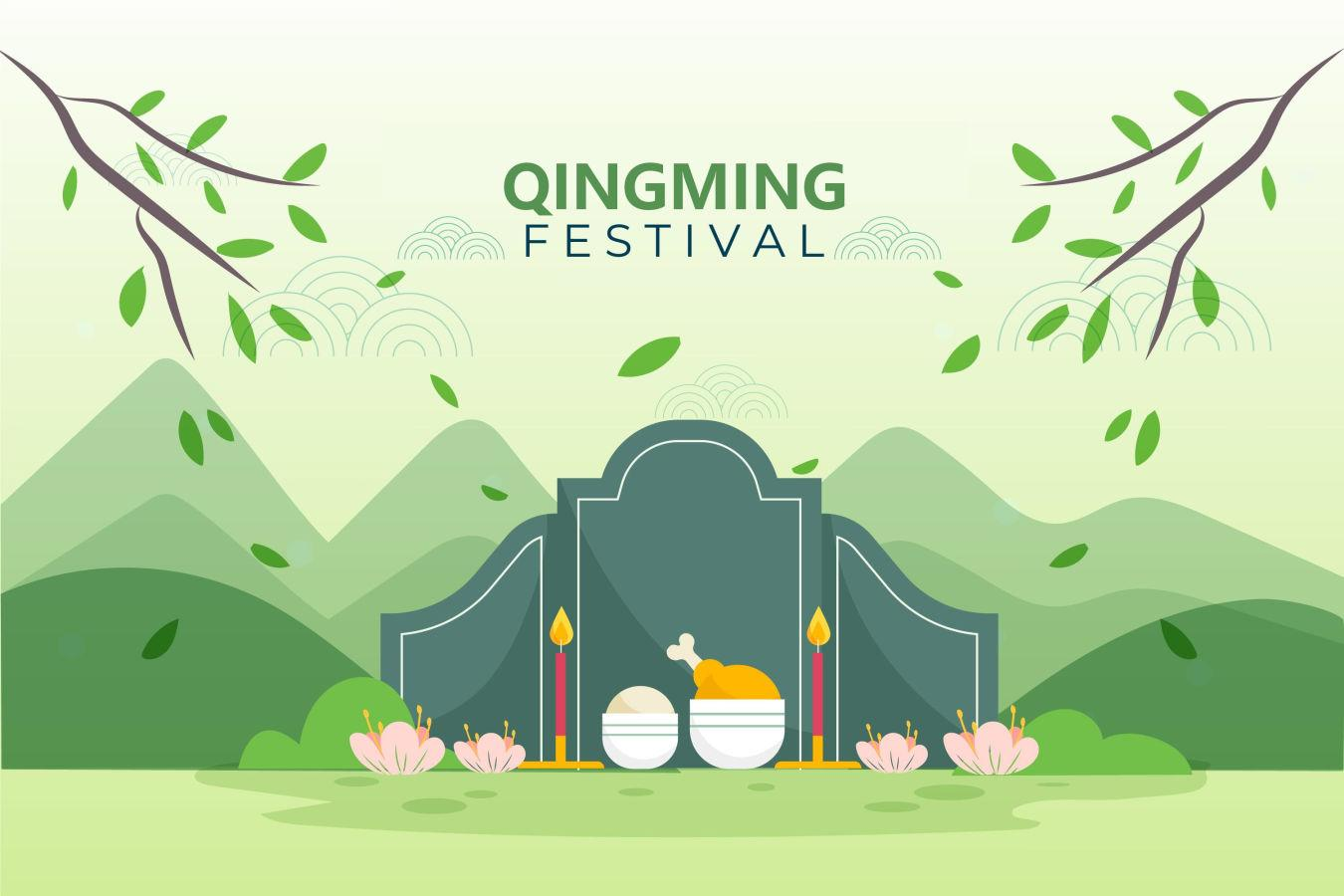Qingming Festival, celebrated as Tomb-Sweeping Day or Cold Food Festival, stands among China's four grandest traditional festivals alongside Spring Festival, Dragon Boat Festival, and Mid-Autumn Festival. More than mere observance, it weaves together astronomy, agriculture, and ancestral reverence in a harmonious tapestry that has evolved over millennia.

- I. Origins: From Celestial Rhythms to Cultural Legacy
- 1. Roots in Agricultural Wisdom
- Originally the fifth solar term in China's 24-part lunar calendar, Qingming falls between April 4-6, precisely "15 days after the Spring Equinox" as ancient astronomers calculated. This period heralds clear skies and lush greenery - embodying the term's literal meaning "pure brightness." For agrarian communities, it marked the commencement of planting season, a critical juncture accompanied by prayers for bountiful harvests.
2. The Jie Zitui Legend's Enduring Influence
- The festival's modern identity crystallized through the legend of Jie Zitui, a loyal advisor during the Spring and Autumn Period (770-476 BCE). Historical records reveal Duke Wen of Jin's decree mandating cold meals in commemoration of Jie's self-sacrifice around Qingming time. By Tang Dynasty (618-907 CE), these Cold Food customs merged with Qingming observances, elevating tomb-sweeping to a core ritual.
3. Shangsi Festival's Springtime Infusion
Elements from the ancient Shangsi Festival (third day of the third lunar month) further enriched Qingming's dual character. Practices like spring excursions and purification rituals blended seamlessly with ancestral veneration, creating a festival that simultaneously honors the past and celebrates renewal.
II. Traditions: Weaving Memory with Rebirth
1. Tomb Sweeping: A Filial Pilgrimage
- Families undertake meticulous grave tending, clearing undergrowth and presenting offerings of food, wine, and symbolic paper money. Rooted in Confucian filial piety, this ritual transcends mere ceremony to become a living bridge connecting generations through shared memory.
2. Spring Revelries: Awakening from Winter's Slumber
- Kite-flying, swing-making, and countryside strolls animate the season with vibrant energy. Ancient traditions believed these activities expelled winter's stagnation, inviting vitality and good fortune into the new cycle.
- 3. Culinary Emblems of Spring
• Qingtuan: Emerald rice cakes hued with mugwort juice, their sweet bean or savory fillings symbolizing rebirth
• Sanzi & Zitui Mo: Crispy fried dough twists in northern China and steamed buns echoing Jie Zitui's sacrifice
• Runbing: Fujian/Taiwan's fresh vegetable pancakes - edible "bundled blessings" wrapped in delicate crepes - 4. Willow Blessings: Nature's Protective Embrace
Doorways adorned with willow branches and woven wreaths reflect age-old beliefs in their power to repel malevolent spirits and agricultural pests.
III. Modern Continuum: Tradition in Digital Age
In contemporary society's relentless pace, Qingming Festival remains both cultural anchor and evolving testament to responsibility. While families gather to honor ancestors, enterprises like Beijing Kwinbon reinterpret traditional commitment through 24/7 technical support during the holiday. Their unwavering service mirrors the festival's essence - just as Qingming rituals demonstrate enduring bonds with the past, Kwinbon's team sees client trust as a sacred duty demanding perpetual vigilance.
This holiday season, our specialists remain at your service. For urgent support, contact product@kwinbon.com - we pledge responses within 12 working hours, ensuring continuity in an ever-changing world.
Post time: Apr-03-2025

